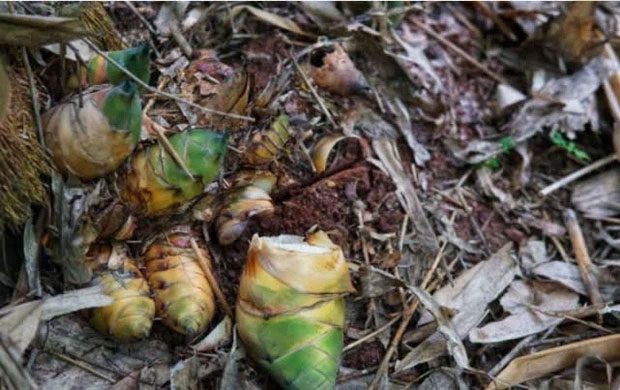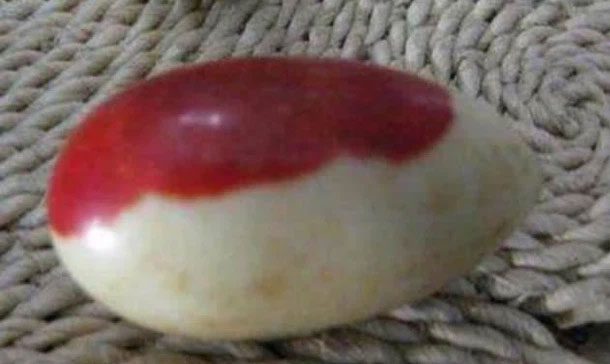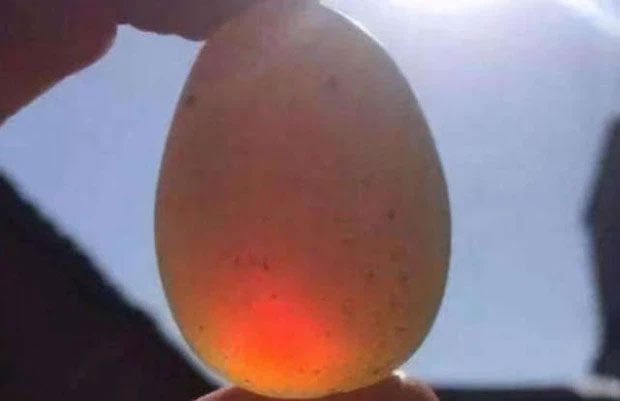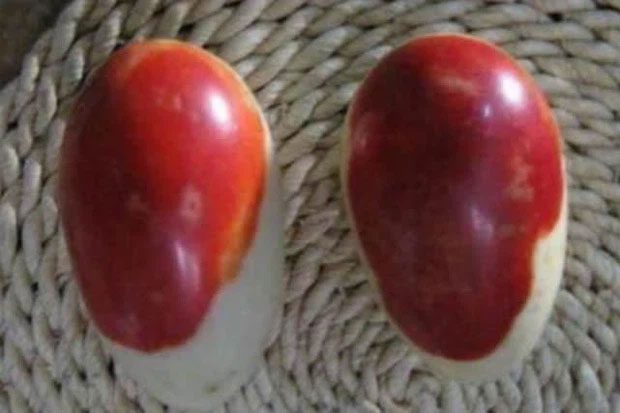China boasts a long and rich cultural history, leaving behind countless priceless treasures throughout each era. As a country that has evolved over thousands of years, the cultural heritage that remains today is vast and varied. While archaeologists tirelessly search for remnants of ancient civilizations, many invaluable artifacts are often discovered by local citizens.
Once, a farmer in Sichuan was fortunate enough to stumble upon a treasure while digging for bamboo shoots on the mountain. What he unearthed was two “blood eggs.” Following an evaluation by experts, it was revealed that these “eggs” are indeed of immense value, estimated at 800,000 RMB (approximately 2.8 billion VND).

The farmer went to the mountain to dig bamboo shoots and accidentally unearthed a precious artifact.
This man, like many other ordinary farmers, relied on the mountains and forests for his livelihood. His daily routine involved climbing the mountain to dig up bamboo shoots to sell at the market, using the modest income to support his family.
One day, he was digging as usual when he discovered two stones in the soil that resembled eggs. Curious, he picked them up and cleaned them, realizing they were far from ordinary. With a mix of red and white, they glowed under the sunlight. Initially, he considered bringing them home for his grandson to play with.
However, he felt that the stones might be valuable, so he decided to show them to his son. But the son also couldn’t identify the items, so they posted pictures online, hoping someone would recognize them. The images captured the attention of experts, who quickly contacted the farmer and took the stones for further study.

These stones are artifacts from the Ming dynasty related to Zhang Xianzhong.
Upon examination, experts confirmed that these stones are artifacts from the Ming dynasty associated with Zhang Xianzhong. Historical records note the last location where Zhang Xianzhong stayed coincidentally matches the site where the farmer found the stones.
This type of stone resembles an egg but is red in color, commonly referred to as bloodstone. Bloodstone is one of the four precious stones in China, extremely rare and often made into toys for emperors in ancient times.

This type of stone is also known as bloodstone.
Zhang Xianzhong was born into a poor farming family but was exceptionally smart and courageous. From a young age, he helped his father sell red apples, and as he grew older, he worked in a government office. Later, he joined the army. Being a strong-willed and straightforward person, he could not tolerate the injustices during the reign of the tyrannical Ming Emperor, the last ruler of the Ming dynasty. He led uprisings from his hometown, burning government buildings, attacking Chicheng, overthrowing the Ming dynasty, and establishing the Great West regime in Chengdu, Sichuan.
These bloodstones were items he often played with during his reign and disappeared after his death, only to be rediscovered by a farmer. Experts believe that these bloodstones may be worth 800,000 RMB (approximately 2.8 billion VND) and have expressed interest in purchasing them. Naturally, the farmer agreed to sell them, as this amount is substantial for him, and keeping the stones would serve no purpose.

Experts believe these bloodstones may be worth 800,000 RMB (approximately 2.8 billion VND).
Ultimately, the value of these ancient artifacts lies in the marks they carry from a bygone civilization. They provide a basis for verifying historical truths. Historical texts reflect the personal biases of their authors, while artifacts offer a more objective existence. Together, these two elements coexist to create the most accurate portrayal of history.



















































